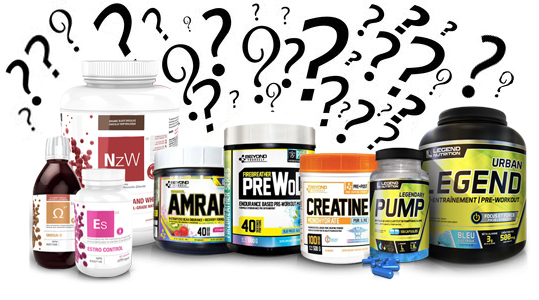A guide to workout supplementation
Jun 10, 2019By Kent Bastell, MSc, CSCS Strength and Conditioning Coach
 Everyday we are bombarded with information regarding nutrition science, especially as it applies to workouts/training. Below is a guide of supplements that I take and regularly recommend to my clients.
Everyday we are bombarded with information regarding nutrition science, especially as it applies to workouts/training. Below is a guide of supplements that I take and regularly recommend to my clients.
Multivitamin – Micronutrients (vitamins and minerals) can be acquired by eating a balanced diet, however, I do not know too many people that eat the correct variety of foods to fulfill the requirements. Micronutrients are the foundation for almost all the body’s processes such as growth, metabolism, immune system, energy production, etc. I always recommend getting vitamins in capsule form, instead of tablet form, as the tablet is hard to digest. I personally use the Total Defense 2.0 from atplab.com.
Omega 3 (fish oil) – Omega 3 and Omega 6 are essential fatty acids (our bodies do not naturally produce it – we must ingest it). Omega 6 is thought to be necessary for inflammation, while omega 3 is thought to be anti-inflammatory. Inflammation is a natural part of the body’s defense system, but we know that chronic inflammation can lead to many chronic disease-states. The North American diet usually sees people eat a ratio of 20:1 Omega 6 vs. Omega 3s, meaning that our diets have become pro-inflammatory. The recommended ratio is 2:1 to 4:1. Supplementing with Omega 3s can help balance this ratio. Omega 3 supplementation has been linked to improvements in cognition, brain aging, ADHD, mental illness, diabetes, cancer, cardiovascular health, nerve pain, arthritis and more. I prefer to ingest fish oil in liquid form, rather than in a capsule.
Pre-workout: Caffeine – Ingesting caffeine 30 minutes before working out found an increase in physical and mental performance. One to two espresso shots, or a cup of Matcha green tea have enough caffeine to see benefits. Taking pre-workout supplements such as C4 powder or high-sugar energy drinks are typically unnecessary for most people/athletes that workout/train. Caffeine pills are likely excessive, but have been found to be effective at lower doses.
During Workout: Branch chain amino acids (BCAA) – BCAA’s are a broken-down version of a protein molecule. Think of protein as a train. It’s one big linked unit with a string of railcars attached to one another. BCAAs work as if each individual railcar was stripped of its bond and existed on its own. When we digest protein this “stripping of the bonds” occurs to utilize the nutrient. Therefore, BCAAs are more readily available to use than protein itself. Some studies have shown BCAAs have a positive effect on muscle growth and recovery, prevents muscle loss, and may increase energy in athletic performance. However, some researchers are skeptical of BCAAs stating that “as long as you are getting enough protein supplementation during the day, you should get the same effect.” I still recommend people use it to make sure they’re filling any gaps they may have.
After Workout: Protein + carb combination – Have you ever heard of chocolate milk being the best post workout drink? The reason behind this is the carbohydrate + protein combo in this drink. When we train, it stresses our body out and activates the sympathetic nervous system, which releases stress hormones. Prolonged stress in our body causes muscles to breakdown. Eating carbs helps to deactivate the sympathetic nervous system, which pulls our body away from stress. Protein availability helps stimulate muscle protein synthesis, meaning muscle recovery will be enhanced. Another example of a good post-workout meal is a banana blended into a protein shake.
Creatine: Creatine unfairly has a bad reputation. In my opinion, many of the negative results that suggest it is harmful for your liver and kidneys were cherry-picked from studies with poor methodology. There has been little to no human research to support this. Creatine is also found natural in many foods, especially meats. About 90- 95% of creatine is stored in muscles. It acts by binding to and storing phosphates, which in its final form, is called phosphocreatine. Phosphocreatine is used to produce a large amount energy at a fast rate. If you need to sprint away from a bear, your body will use its phosphocreatine first to give you a big initial energy burst (for about 10-15s). Benefits of creatine include increased recovery from high-intensity training, improved athletic strength and power output, and enhanced muscle recovery. No research has been done on the effects of creatine during growth, so I usually recommend people be 18 before they take it. But for a mature amateur or elite lifter, I think it’s a necessity to cycle during the year, especially during the most intense sessions/blocks.
*For any extreme changes in diet, or for people with chronic illnesses it is always recommended to consult a physician or dietician first. This article is not intended to replace the advice of these professionals.

